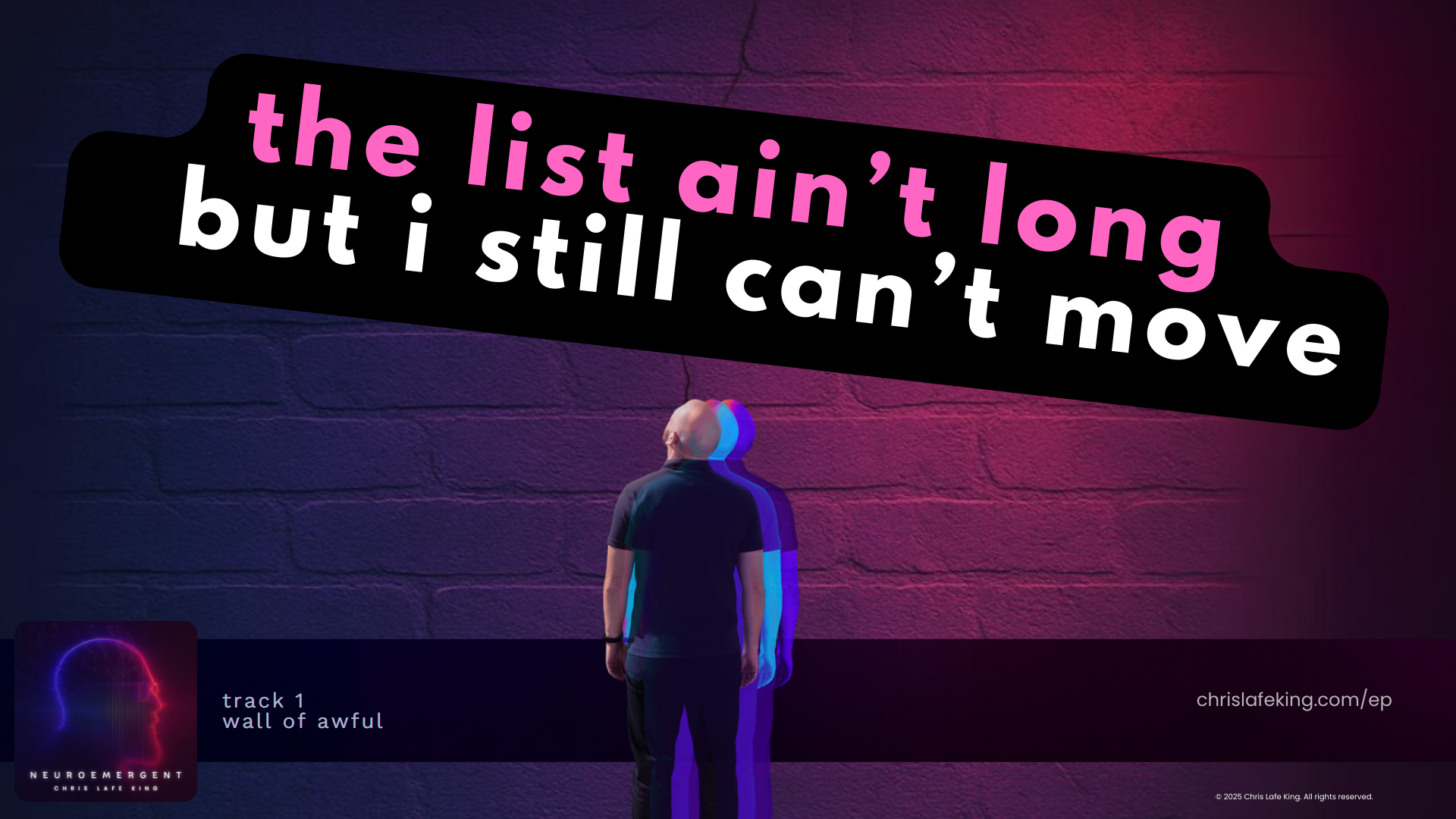Breaking Down the "Wall of Awful"
The Wall of Awful still shows up in my life. It isn’t permanent even if old regrets, new mistakes, or anxious voices keep stacking up. But I see it differently now.

Disclaimer: I’m not a clinician or ADHD professional. What follows is my lived experience, informed by books, talks, and research I’ve learned from, and how I’ve put those lessons into practice. If you’re seeking support or expert perspective, check out reputable organizations like ADHD Worldwide, which provides resources and directories for many countries.
The “Wall of Awful” is one of the most useful metaphors to come out of the ADHD community. ADHD coach Brendan Mahan first named it, and since then it’s become shorthand for a feeling many of us know too well: standing frozen in front of something that looks like a task but feels like a monster.
Every brick in the wall is a memory… the time you forgot an assignment, the bill you missed, the sharp comment from a teacher, boss, or even your own inner critic: lazy, careless, difficult. Over time those bricks pile up, making even the simplest step (answering an email, starting a project, making a phone call) feel like scaling a fortress.
What I've Learned So Far
From what I’ve learned, this isn’t just a metaphor: it’s how our brains react. ADHD often disrupts what’s called executive function: the set of mental skills that help people plan, organize, manage time, and regulate their behavior. When things go wrong, it doesn’t just sting for a moment, it leaves a kind of trace. The amygdala, which senses danger, can go into overdrive, while the prefrontal cortex (the part that helps with planning and decision-making) gets quieter. Suddenly, we don’t just see a task… we feel a threat. That’s the wall.
In pop-wellness circles, the Wall of Awful helps explain task paralysis without shame. Jessica McCabe from How to ADHD describes it as all the negative emotions that stack up between you and the thing you need to do. Naming it shifts the conversation: you’re not lazy or broken. You’re facing a wall other people may not even notice.
Breaking Down My Wall
I felt this in a very real way when writing my debut EP, Neuroemergent. The last song I wrote was “Wall of Awful” because, honestly, I couldn’t bring myself to release the first 5 songs. For weeks, I was circling my own wall: self-doubt, shame, perfectionism. The overthinking loop had begun and it threatened everything I had done so far.
Then, finally, I wrote the lyric:
That line cracked the bricks for me. I don’t have to be perfect to move forward. Progress will always beat perfection. I just need to take the step. Just the creative act of writing this down as a song turned the wall into something I could breathe through, reframe, and step over. Honestly, I keep returning to this lesson, every time I overthink a social post or newsletter (like this one! 😅)
So, the Wall of Awful still shows up in my life and always will thanks to my wild mind. But now I know it isn’t permanent even if old regrets, new mistakes, or anxious voices keep stacking up. I see it differently now. The wall might come back with new challenges, but it isn’t me. It doesn’t define me, and it isn’t impossible to cross.
From Wall To Step
If you’re staring at your own Wall of Awful today, here’s something you can try (it helps me, too):
- Write down one brick: a single thing weighing you down.
- Take a breath, and let yourself feel it.
- Reframe it as a step you can do right now, even if that first one feels impossibly hard.
While that first step might feel impossible, it’s also where real momentum begins.
Sharing what you struggle with doesn’t make you a burden, it makes you resourceful and connected! You are a creative problem-solver by nature. So the next time the "list ain't long, but I just can't move," let’s lean into that embracing our wild, inventive brains, and take the next step together. Sound good?
Sources and Further Reading
- Brendan Mahan, creator of the “Wall of Awful” concept: ADHD Essentials Podcast.
- Jessica McCabe, How to ADHD YouTube channel, especially her video on the Wall of Awful.
- Russell Barkley, Taking Charge of ADHD—leading researcher on executive function and ADHD.
- Ned Hallowell & John Ratey, Driven to Distraction—foundational ADHD resource.
- Rick Rubin, The Creative Act: A Way of Being—creative inspiration and reframing self-talk.
- ADHD Worldwide — a global directory of ADHD organizations, resources, and support in many languages and countries: adhdworldwide.org

